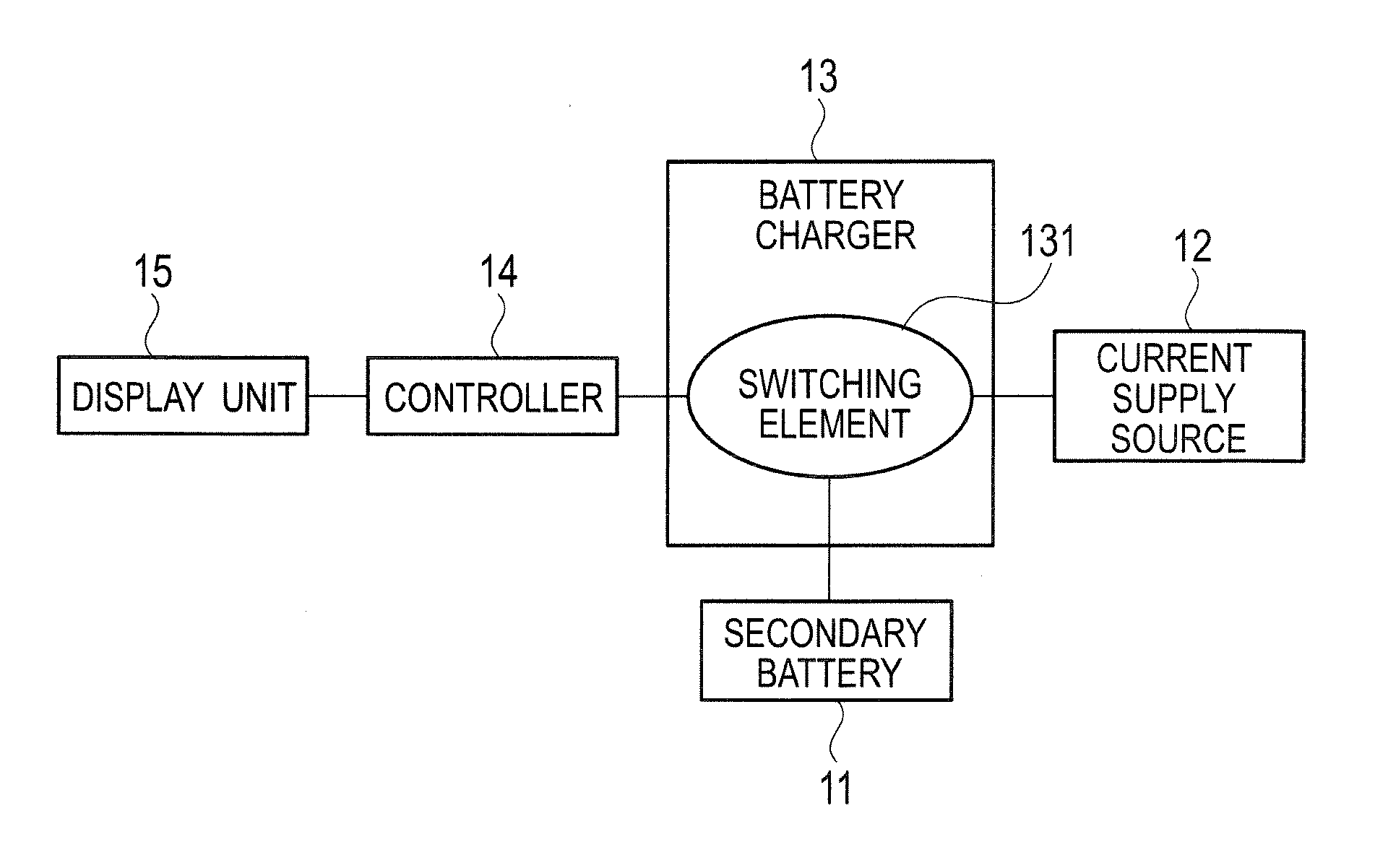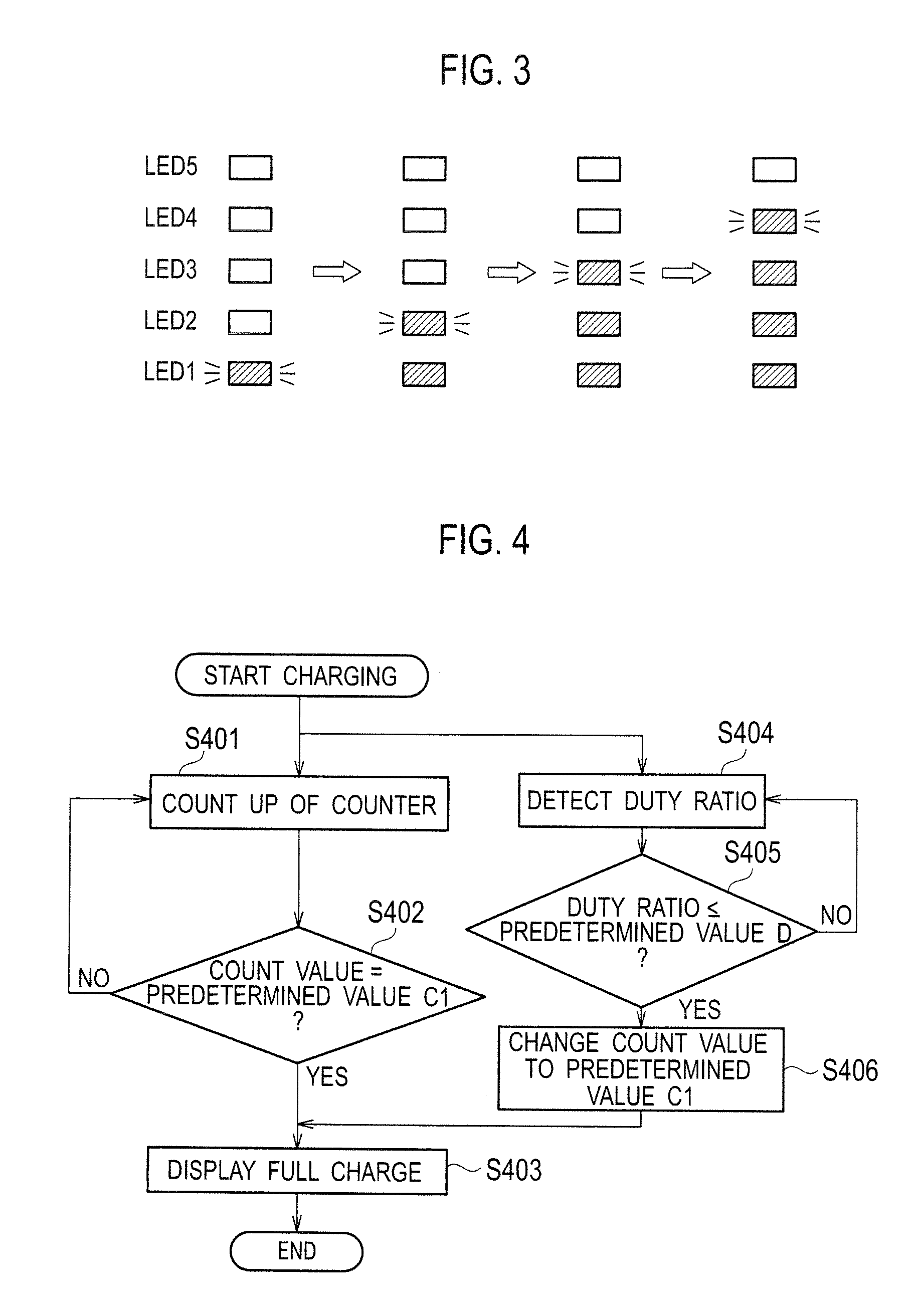Rechargeable electric device
a technology of electric devices and battery packs, applied in the direction of electrochemical generators, secondary battery servicing/maintenance, transportation and packaging, etc., can solve the problem of causing a great error between the count value and the remaining capacity of the secondary battery, and it is difficult for the display unit corresponding to the count value to accurately display the full charge state.
- Summary
- Abstract
- Description
- Claims
- Application Information
AI Technical Summary
Benefits of technology
Problems solved by technology
Method used
Image
Examples
first embodiment
[0017]A rechargeable electric device according to a first embodiment illustrated in FIG. 1 includes a secondary battery 11, a current supply source 12, a battery charger 13, a controller 14, and a display unit 15.
[0018]The secondary battery 11 includes, for example, a nickel-metal hydrogen battery, a nickel-cadmium battery, or the like, and is charged with a charging current supplied from the current supply source 12 by way of the battery charger 13.
[0019]The current supply source 12 supplies a direct current to the battery charger 13. The direct current is supplied from, for example, a commercial AC power source of about 100 V to 240 V by way of an AC adapter.
[0020]The battery charger 13 includes a switching element 131 such as transistor. The switching element 131 is connected between the secondary battery 11 and the current supply source 12. The switching element 131 receives the direct current supplied from the current supply source 12, controls and adjusts the charge current su...
second embodiment
[0034]In accordance with a rechargeable electric device according to a second embodiment, FIG. 5 is a flowchart illustrating procedures of the displaying operation processes by the display unit 15 at the time of charging the secondary battery 11. The procedures illustrated in the flowchart of FIG. 5 have such a characteristic as that, compared with the procedures illustrated in FIG. 4, the processes at steps S501 and S502 are added before the processes at steps S401 and S404 in FIG. 4 after starting the charging, with other characteristics being like those in FIG. 4. Thus, in FIG. 5, the steps S503 to S505 are like the steps S401 to S403 in FIG. 4 while steps S506 to S508 are like steps S404 to S406 in FIG. 4.
[0035]In FIG. 5, first, the charging of the secondary battery 11 is started, and the counter makes count up per preset constant time, to thereby add the count value (step S501). Then, it is determined whether or not the count value has reached a predetermined value C2, herein “...
PUM
 Login to View More
Login to View More Abstract
Description
Claims
Application Information
 Login to View More
Login to View More - R&D
- Intellectual Property
- Life Sciences
- Materials
- Tech Scout
- Unparalleled Data Quality
- Higher Quality Content
- 60% Fewer Hallucinations
Browse by: Latest US Patents, China's latest patents, Technical Efficacy Thesaurus, Application Domain, Technology Topic, Popular Technical Reports.
© 2025 PatSnap. All rights reserved.Legal|Privacy policy|Modern Slavery Act Transparency Statement|Sitemap|About US| Contact US: help@patsnap.com



